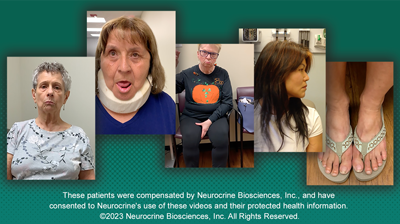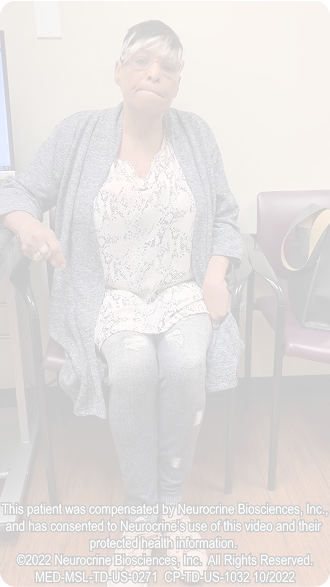

~5 mins
•May 2024
Introduction to TD Movement
Sometimes multiple movement disorders can coexist, complicating differential diagnosis.1

This video features a brief clip from an HCP-patient interaction and is not a complete formal exam.
The completed portions of the MIND-TD Questionnaire that accompany this video are taken from sections of the questionnaire and do not represent the screening tool in its entirety.
The MIND-TD Questionnaire is intended to facilitate a dialogue about abnormal movements with patients at risk for TD. Diagnosis of TD should be based on the patient’s medical history, their symptoms, and the clinician’s best judgment.
Reference
Hauser RA, Meyer JM, Factor SA, et al. Differentiating tardive dyskinesia: a video-based review of antipsychotic-induced movement disorders in clinical practice. CNS Spectr. 2022;27(2):208-217.